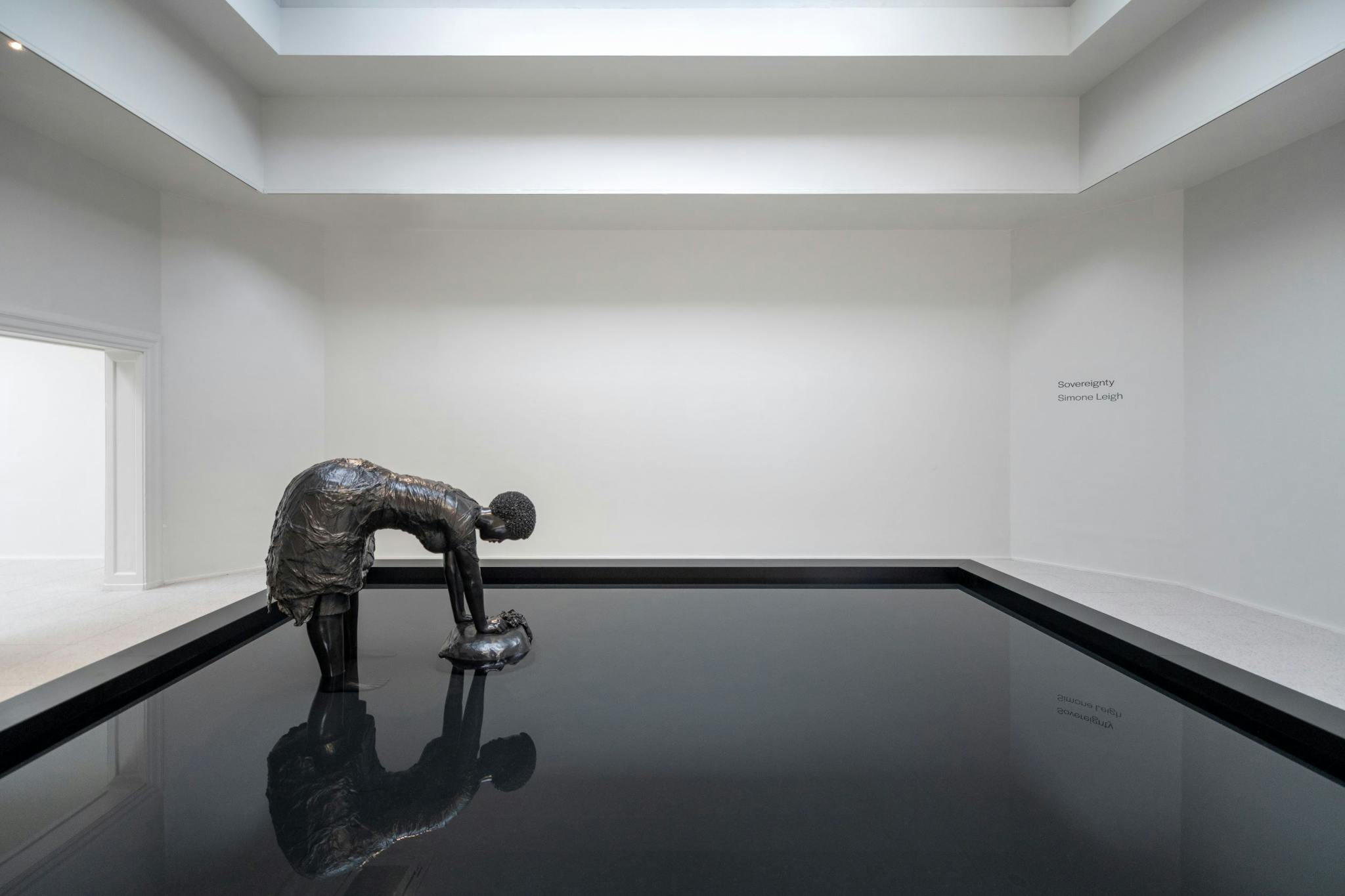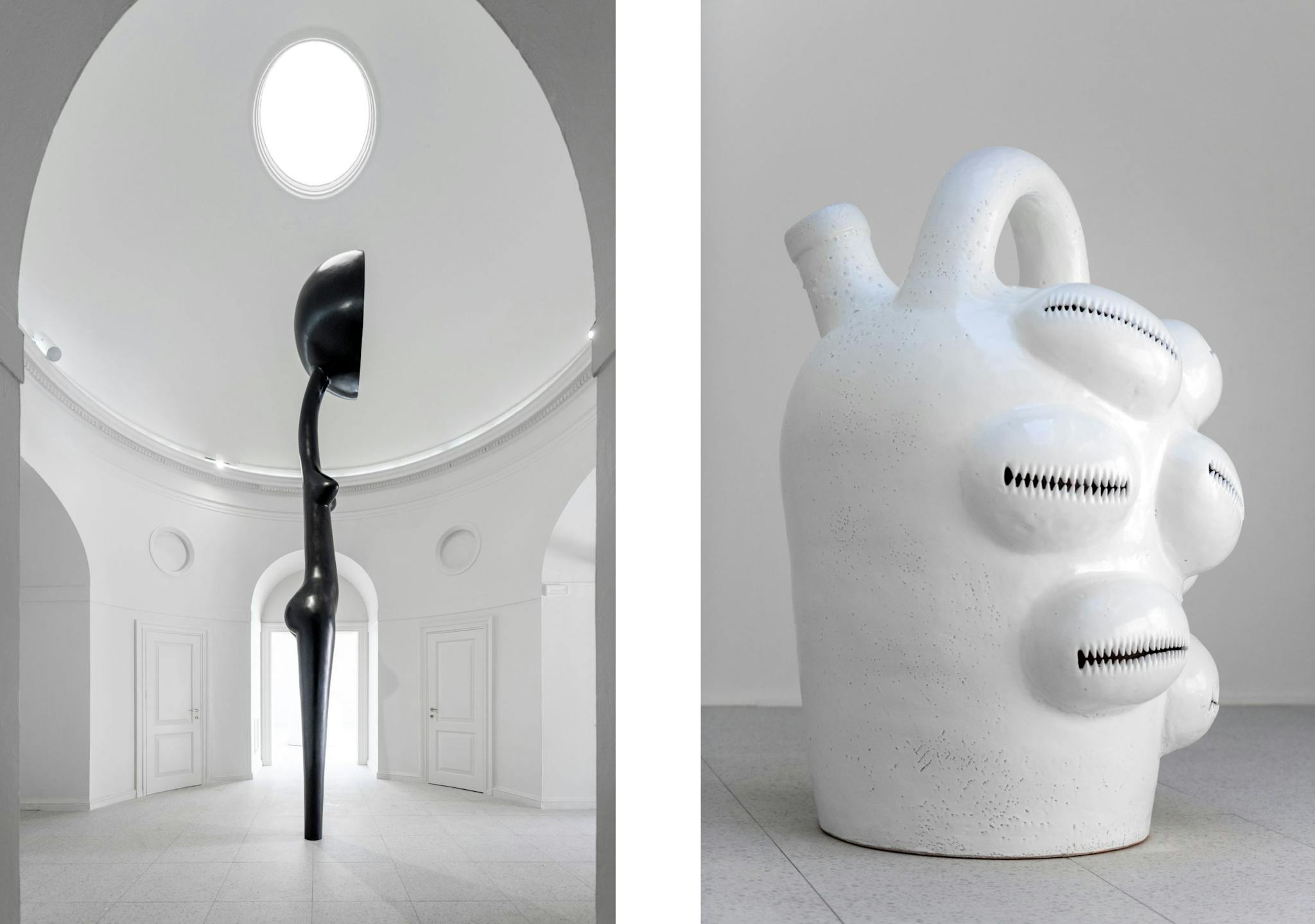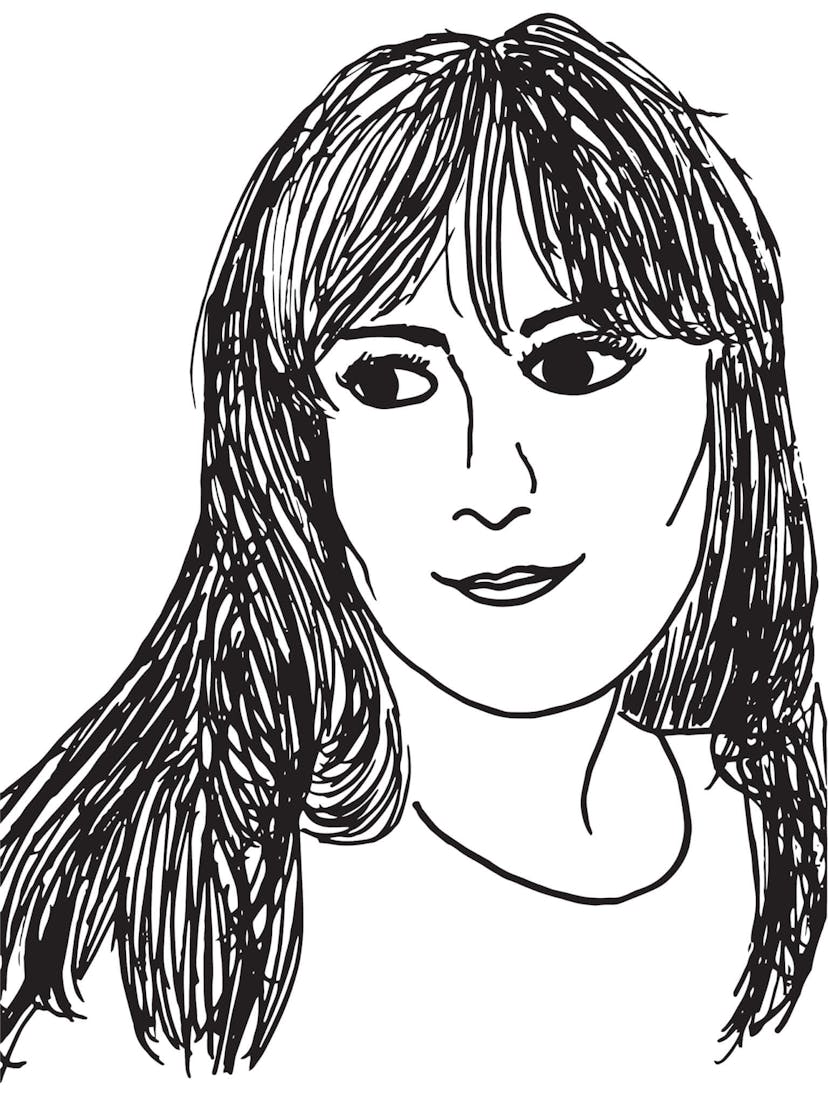For Simone Leigh, the hard lines of history, borders, and archives are source materials waiting to be reconstructed by the hands of a skilled maker. Leigh, who was selected to represent the United States at the fifty-ninth Biennale in Venice, has used the space to do exactly that. As the first Black woman to hold this honor in what is often regarded as the art world’s most important event, Leigh has presented a body of work that feels simultaneously like the magnum opus of her lifelong commitment to showcasing Black female subjectivity and the beginning of a bold new chapter. Aptly titled “Sovereignty,” the exhibition is a site for bold reclamation and self-determination, where chronicles of the past have been repurposed into abstracted visions for the future.
Up until a few weeks prior to the exhibition’s opening, Leigh had referred to the title as “Grittin.” Though any trace of that former title has been scrubbed from the formal record, it provides another illuminating lens through which to view this body of work: Leigh is invariably vested in celebrating a sense of resilience that she feels is central to the legacies of Black women, yet while “Grittin” places the onus on the recipient to merely withstand adversity, “Sovereignty” emphasizes a power to claim autonomy, to overcome. Leigh’s sculptures offer weighty intercessions of Black womanhood unadorned by national markers. While she may represent the U.S. on the world stage of art diplomacy, her primary audience is Black women everywhere. In Leigh’s words, to be sovereign is to be “the author of one’s own history” and that is exactly what she has accomplished.
Inside Venice’s Giardini, the globe is condensed. Pavilions for dozens of countries are placed together in an Epcot-like display of art diplomacy where oceans are shrunk and borders are blurred. Finland sits a stone’s throw from the United States, for example. When the U.S. pavilion debuted in 1930, red bricks and white columns decorated the facade of the fiveroom, U-shaped building. Designed by William Adams Delano and Chester Holmes Aldrich, the architecture is reminiscent of Thomas Jefferson’s plantation property, Monticello, which, sited just outside of Washington D.C. and built by enslaved people in the 1770s, is one of the nation’s most recognized examples of neoclassical or Palladian-inspired architecture. The pavilion stands not far from churches designed by the style’s namesake, Renaissance architect Andrea of Palladio.
For Leigh, these symbols of empire-building exported for the art world’s stage are a source for subverting power and broadcasting truth. Rather than participating in the upholding of these antiquated edifices, Leigh has mined colonialist histories to turn national pride on its head, or in this Pavilion’s case, to shroud it in thatched raffia. Here, the exterior of the Pavilion has been transformed into a structure resembling a 1930s West African rondavel. Leigh modeled the structure off of images taken at the 1931 Paris Colonial Exposition, where a gruesome presentation of the “cultures” (including people) brought in from the then-colonized lands were put on display. At the center of the courtyard, Leigh’s Satellite stands mightily. The form is taken from the traditional D’mba, a wooden headdress of a female bust historically worn on the shoulders of the Baga peoples on the Guinea coast. When worn during performances or ceremonies, the base of the headdress would be covered with a deep indigo fabric over the wearer’s head, giving the illusion of the D’mba moving as a tall, exalted deity. For Leigh’s sculpture, the head is replaced by a large bronze satellite dish, designed—like the traditional D’mba—to be a vessel for receiving and a tool for communicating.
When the Institute of Contemporary Art Boston’s Eva Respini began working with Simone Leigh on the artist’s first survey exhibition, it quickly became clear that Leigh’s work was meant for an even bigger platform. At the time, Leigh’s work had recently been on view at the Guggenheim Museum, where her well-known sculptures of Black women paired with household objects, architectural forms, historical artifacts, and wide skirts took up floor space and exuded power. It was at the Guggenheim where Leigh utilized “Loophole of Retreat” as both an exhibition title and a platform for convening around the intellectual and creative labor of Black women. The title is taken from the writing of Harriet Jacobs, a formerly enslaved abolitionist who called the crawlspace where she hid for seven years to achieve freedom her own “loophole of retreat.” For Leigh, the title is evocative of the worlds Black women across generations must create by and for themselves in order to thrive, or in some cases, to survive. This fall, a second version of the “Loophole” conference will be held in Venice. Co-organized by Rashida Bumbray and Tina M. Campt, the planning around this convening is quintessential to Leigh’s interest in championing and gathering around the accomplishments of Black women.
Façade and Loophole feel like the most novel contributions to the oeuvre of the New York-based artist whose work quickly catapulted to stardom in the United States. Once inside the pavilion, viewers are met by Leigh’s familiar forms rendered in dark bronze and glowing ceramic white. Though masterfully created and aesthetically beautiful, there’s almost something about the sculptures that feel too polished or removed from the contexts Leigh pulled them out of. In the first gallery, a long reflection pool features a sculpture of a woman bent over a rock. Frozen in time, Last Garment references an 1879 photograph taken in Jamaica by C. H. Graves titled Mammy’s Last Garment, which captured a laundress hard at work. It’s the type of image that was sent on postcards to promote white tourism in the British-occupied Caribbean colonies. Though rendered with care at the hands of Leigh, it’s not immediately clear how this sculpture is meant to imbue the sovereignty that the woman depicted in the photograph was not permitted to possess.
Archival photographs are a frequent point of reference for Leigh. In the adjacent gallery, Jug stands squat at five feet tall with a reflective white veneer covering the jagged cowrie shells—a motif that Leigh often employs to evoke femininity. Across the room, Anonymous depicts a young Black woman in a wide dress with billowing sleeves bringing her hands to rest at the side of her detail-less face. Both forms are drawn from a racist 1882 photograph featuring the woman alongside the first known image of an Edgefield stoneware jug made by enslaved peoples, and later by free African Americans in South Carolina. The sharpness of Jug paired with the stoic softness of Anonymous is where Leigh’s intent as a sculptor is most felt and her manipulation of archival imagery is most effective.
In the Pavilion’s rotunda, the towering bronze Sentinel stretches up high with the satellite dish reappearing once again in place of the figure’s head. On the other side, Leigh’s portrait and tribute to Sharifa Rhodes-Pitts depicts the writer at a stature twice her size with her head tilted slightly downward and a foot emerging from under her skirt—a reference to the ancient Egyptian tradition of immortalizing gods with a foot stretching toward eternity. In the final gallery, the motifs, symbols, and materials seen throughout the exhibition culminate together. In Cupboard, a raffia skirt forms the base for a cowrie shell head, a ceramic sphynx lurks by the door, and a cobalt blue headless figure called Martinique guards the corner.
In this refined collection of works, a story of Leigh’s relationship to material and medium unfolds. A ceramicist for most of her career, the artist began to cast her figures in bronze only a few years ago. It was actually her contribution to the biennial’s “Milk of Dreams” exhibition, the bronze sculpture Brick House (which previously towered atop the High Line in New York before making its way to Venice), that won Leigh the Golden Lion top prize. A form that she might have previously crafted in clay, terracotta, or concrete has now been solidified in bronze. As Leigh settles into her power and her medium, there’s room for her archival research, collaborative nature, and community-driven practices to shine. Though a black-and-white film showcasing Leigh’s process gave some insights into how the artist creates and cares for these objects, the short film on what the artist calls the “performativity” of the work space did no favors for viewers seeking to be let into Leigh’s world. As is her prerogative. It is, perhaps, her own loophole of retreat after all.
“Simone Leigh: Sovereignty” is on view at the United States Pavilion, 59th Venice Biennale from April 23 through November 27, 2022. A survey exhibition of Leigh’s work will be on view at Institute of Contemporary Art/Boston from March 29 through September 4, 2023.



